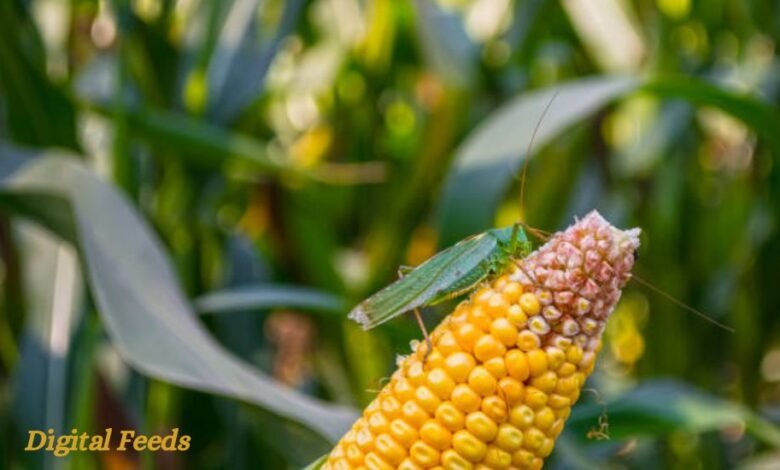What Do Crickets Eat: The Secrets Behind Their Diet Choices
What Do Crickets Eat? Diet of These Ubiquitous Insects

Crickets, those chirping creatures of the night, are more than just background noise to our evenings. Their diets are as varied as the environments they inhabit, ranging from lush forests to our own backyards. This detailed exploration reveals what crickets eat and how their feeding habits impact the ecosystem.
Understanding Cricket Diets: The Basics
Crickets are omnivorous insects, meaning they consume both plant material and animal-based food sources. Their ability to adapt their diet based on availability makes them resilient survivors in diverse environments. Typically, wild crickets feast on a mix of leaves, fruits, seeds, and smaller insects. In contrast, captive crickets, often raised as pet food, are usually fed a controlled diet that includes vegetables, fruits, and commercial cricket feed to ensure they are nutritious for the pets they feed.
The Plant Side of a Cricket’s Diet
In the wild, crickets are often found nibbling on leaves, flowers, and the stems of various plants. This not only includes wild foliage but can also encompass garden plants and crops, making crickets a bane to farmers and gardeners. They particularly favor young, tender plant shoots and any decaying matter, which they help decompose, thus contributing to the nutrient cycle in their habitats.
Crickets as Predators and Scavengers
Besides plant matter, crickets consume other insects, which may include anything from aphids and larvae to other smaller or weakened insects. This predatory behavior is crucial in controlling the population of these smaller pests, which can help maintain agricultural and garden health. Additionally, crickets scavenge dead insects and animals, cleaning up organic waste and preventing potential outbreaks of disease.
Feeding Captive Crickets: A Controlled Diet
Captive crickets are typically fed a more regulated diet, which includes high-protein and nutrient-rich foods like commercial cricket chow, vegetables such as carrots and potatoes, and fruits like apples and oranges. This diet is tailored not just to keep the crickets healthy, but also to make them nutritious for the reptiles, birds, and amphibians that consume them as part of their diet.
Understanding the Diverse Diets of Crickets: What Do Crickets Eat?
What Do House Crickets Eat?
House crickets (Acheta domesticus) are omnivorous insects known for their adaptability and varied diet. In the wild, they consume a mix of plant material and small insects, but when kept in captivity, their diet often includes commercial cricket chow, fresh vegetables like carrots and potatoes, and fruits such as apples and oranges. These foods provide essential nutrients, ensuring that house crickets remain healthy and vibrant. Additionally, house crickets can eat grains like rolled oats and wheat germ, as well as small amounts of animal-based food such as dry cat or dog food, which is crushed into smaller pieces for easier consumption. Their versatile eating habits make them easy to care for in captivity, contributing to their popularity as feeder insects for pets like reptiles and amphibians.
What Do Crickets Eat in the House?
When crickets find their way into homes, their diet can vary significantly based on what they encounter. Typically, crickets inside a house will eat a variety of organic materials they can find, including food crumbs, paper products, fabrics, and even pet food. They are particularly attracted to starchy substances and can cause damage to items like wallpaper, books, and upholstered furniture. House crickets will also consume decaying plant matter and fungi if present. Their ability to eat such a wide range of materials is one reason they can become pests when they invade indoor spaces, causing both damage and nuisance with their persistent chirping.
What Do Mormon Crickets Eat?
Mormon crickets (Anabrus simplex), despite their name, are not true crickets but rather katydids. They are notorious for their voracious feeding habits and can consume a wide range of plant materials, which makes them significant agricultural pests. Mormon crickets primarily feed on grasses, forbs, shrubs, and crops such as wheat and barley. They are also known to exhibit cannibalistic behavior, particularly when protein is scarce, eating injured or dead crickets. Their feeding can lead to substantial damage to crops and rangeland vegetation, affecting both agricultural productivity and natural ecosystems. During outbreaks, these crickets can form large, destructive swarms that devastate fields and gardens .
What Do Camel Crickets Eat?
Camel crickets (family Rhaphidophoridae), also known as cave crickets or spider crickets, have a diet that primarily consists of decaying organic matter. They are commonly found in cool, damp environments such as basements, caves, and under logs. These crickets feed on a variety of materials, including fungi, plant debris, and even fabric. In domestic settings, camel crickets may consume cardboard, cloth, and paper products, making them occasional pests. Their preference for damp, dark environments means they play a role in breaking down organic material in natural settings, contributing to nutrient cycling and the decomposition process .
These varied dietary habits illustrate the adaptability of crickets and their relatives, enabling them to thrive in diverse environments and play important roles in their ecosystems. Understanding these habits can help manage cricket populations and mitigate their impact when they become pests.
The Role of Crickets in the Ecosystem
The diet of crickets places them as pivotal players in their ecosystems. By feeding on plant material, they help in the aeration of the soil and the breaking down of organic material, which enriches the soil quality. Their role as both prey and predator also balances insect populations and supports a diverse food web. Birds, small mammals, spiders, and even other insects often rely on crickets as a primary food source.
Potential Problems from Cricket Diets
While crickets are beneficial to the ecosystem, their feeding can also cause problems, especially in agricultural settings. Crickets can become pests, damaging crops and ornamental plants by feeding on leaves, fruits, and vegetables. Understanding their feeding habits is crucial for managing their populations and mitigating their impact on farming and gardening.
Conclusion:
What crickets eat is a testament to their adaptability and their role as essential components of their ecosystems. By understanding the diverse diet of these insects, we can better appreciate their place in nature and the delicate balance they help maintain. Whether as a pest or a beneficial organism, crickets continue to fascinate and influence the environments they inhabit.
Through this exploration of their dietary habits, we gain insight into the complex interdependencies of life and the importance of every creature, no matter how small, in the vast network of ecological relationships. As we delve deeper into the study of crickets and their diets, we not only unravel the mysteries of these common insects but also uncover broader ecological truths that underscore the interconnectedness of life on Earth.




